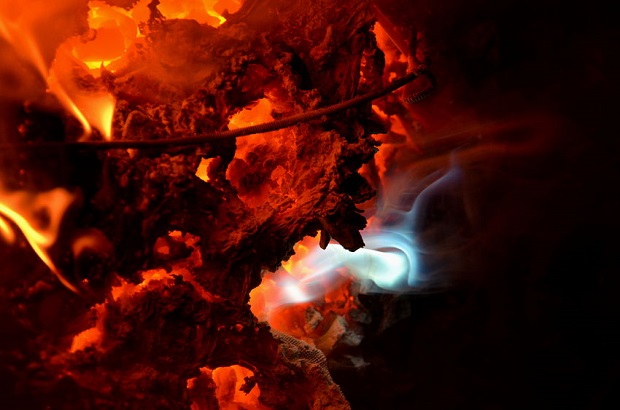
“© valio84sl/123RF.COM”
Where Is Magnesium Found?
Magnesium is found in nature, in the human body, and in food sources. In nature, magnesium is found in combination with more than 60 minerals, those of significance being dolomite, magnesite, brucite, carnallite, talc, and olivine. In the human body, magnesium is found primarily in the bones. The top food sources include several types of nuts and seeds.
Jump Ahead
- Where Magnesium Is Found In Nature
- Magnesium Found In Combination with Minerals
- Where Magnesium Is Found In the Human Body
- Where Magnesium Is Found In Food
- Resources
Where Magnesium Is Found In Nature

Magnesium is an alkaline earth metal and one of the 118 elements of chemistry. Magnesium cannot be found as an individual element in nature. Instead, it can be found combined with other elements such as dolomite and magnesite. So, to procure magnesium, it must be extracted from other elements.
Sea Water – contains trillions of tons of magnesium. Most of the magnesium produced for human use comes from seawater. In seawater, magnesium is combined with other elements such as sodium chloride and must be separated by the electrolysis of molten magnesium chloride or reducing magnesium oxide with silicon. [1]
Chlorophyll – contains one atom of magnesium at its center. [2] Chlorophyll is the green pigment in plants that is an essential part of the photosynthesis process by which green plants synthesize food from carbon dioxide and water using sunlight. So ultimately, this one tiny little magnesium atom is a major factor in the existence of life on Earth. [3]
Magnesium Found in Combination with Minerals

“© igork1435/123RF.COM”
Magnesium can be found in combination with more than sixty minerals, but only a handful have commercial consequences. [4]
Dolomite – the term used for the mineral calcium magnesium carbonate CaMg(CO3)2. Dolomite is used as a source of magnesia, which is a term used to describe magnesium oxide. Magnesia is used as a feed additive for livestock and an ingredient in glass, brick, and ceramic production. [5]
Magnesite – is the term used for the mineral magnesium carbonate MgCO3. When heated, magnesium oxide will separate into carbon dioxide and magnesium oxide. Because magnesium oxide has such a high melting point, it is used commercially to make bricks for the interior of kilns, industrial ovens, and blast furnaces. It is also used as a refractory metal in making steel and fertilizers. [6]
Brucite – is the term used for the mineral form of magnesium hydroxide Mg(OH)2. Brucite is considered a significant source of industrial magnesium.
Carnallite – is the term used for hydrated potassium, magnesium, and chloride mineral KMgCl3·6(H2O). Carnallite is primarily used to make fertilizers due to its potassium content, but it is also considered a minor source of magnesium [7]
Talc – is a hydrous magnesium silicate mineral Mg3Si4O10(OH)2. Talc has many uses. Though the most commonly recognized is talcum powders and other personal hygiene products, it is also used in more industrial processes, including plastic, paper, ceramic, and paint manufacturing. [8]
Olivine – is a catch-all word to describe a group of rock-forming minerals with particular properties. The olivine with a high magnesium content is pure forsterite Mg2SiO4. Forsterite is used in blast furnaces to form a slag and to remove impurities from steel. [9]
Where Magnesium Is Found In The Human Body

Magnesium is also found in the human body. According to the National Institutes of Health Office of Dietary Supplements, an adult body contains approximately 25 grams of magnesium. 50-60% of the body’s magnesium can be found in the bones, while the remainder can be found in soft tissues. [10]
The human body requires magnesium to function properly. Magnesium regulates blood pressure, muscle and nerve function, and blood sugar levels. Magnesium is also required to make protein, bone, and DNA. [11]
Where Magnesium Is Found In Food

Magnesium can also be found in food. However, the human body does not produce magnesium, so it is important to get it through food sources.
Below is a list of the foods highest in magnesium per serving from the US Office of Dietary Supplements. [12]
Nuts and Seeds – pumpkin seeds (1oz) 156 mg, chia seeds (1 oz) 111 mg, almonds (1 oz) 80mg, cashews (1 oz) 74mg, peanuts, roasted (1/4 c) 63 mg, Peanut butter (2 Tbsp) 49 mg,
Vegetables – Spinach (1/2 c) 78mg, Edamame (1/2 C) 50mg, Potato, baked with skin, (3.5 ounces) 43mg,
Grains – Cereal – shredded wheat (2 biscuits) 61 mg, Rice, brown, cooked, (½ cup) 42mg, Bread, whole wheat, (1 slice) 23mg
Dairy – Soymilk, plain or vanilla, (1 c) 61mg, Yogurt, plain, low fat, (8 oz) 42mg, Milk, (1 c) 24mg
Legumes – Black beans, cooked, (½ c) 60mg, Kidney beans, canned, (½ c) 35mg,
Fruits – Banana, (1 medium) 32mg, Raisins, (½ c) 23mg, Avocado, cubed, (½ c) 22mg
Meat/Fish: Salmon, Atlantic, farmed, cooked, (3 oz) 26mg, Halibut, cooked, (3 oz) 24mg, Chicken breast, roasted, (3 oz) 22mg, Beef, ground, 90% lean, pan-broiled, (3 oz) 20mg
Resources
- [1][2] Royale Society of Chemistry – “Magnesium.”
- [3] Smithsonian Science Education Center – “What Is Photosynthesis?”
- [4] US Geological Survey – National Minerals Information Center – “Magnesium Statistics and Information.”
- [5] Geology.com – “Dolomite.”
- [6] Geology.com – “Magnesite.”
- [7] Phosphate, potash, and sulfur- A special issue. (1979) Economic Geology 74, 191–493
- [8] Geology.com – “Talc: The Softest Mineral.”
- [9] Geology.com – “Olivine.”
- [10][11][12] National Institutes of Health- US Office of Dietary Supplements – “Magnesium.”